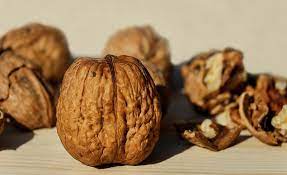Keywords: Weaning, toddlers, solid foods, age-appropriate foods, weaning tips
As your little one embarks on the exciting journey of exploring the world of solid foods, a gradual process known as weaning takes center stage. This transformative phase marks a significant transition from the comfort of breastfeeding or formula feeding to a diverse array of nourishing edibles. While embarking on this path, it’s crucial to approach weaning with patience, understanding, and a wealth of knowledge to ensure a smooth and enjoyable experience for both you and your toddler.

When to Begin Weaning
The ideal timing for weaning varies from child to child, but the World Health Organization (WHO) recommends exclusive breastfeeding for the first six months of life. After this initial period, solids can be gradually introduced, typically between the ages of four to six months. However, it’s important to observe your toddler’s readiness for solid foods, as some children may not be prepared until closer to nine months or even a year old.

Signs of Readiness for Solids
Several indicators suggest your toddler is ready for the introduction of solid foods:
- Head control: Your toddler can sit upright with good head and neck support.
- Hand-to-mouth coordination: They can grasp objects and bring them to their mouth.
- Interest in food: They show curiosity about food and reach for items on your plate.
- Outgrowing breast milk or formula: Their growth rate may slow down, indicating a need for additional nutrients from solid foods.

Age-Appropriate Food Ideas
As you navigate the weaning journey, here’s a breakdown of age-appropriate food ideas to introduce your toddler to the world of solid foods:
- 4-6 months: Start with smooth purees of single-ingredient fruits and vegetables like avocados, sweet potatoes, bananas, and carrots.
- 6-9 months: Gradually introduce lumpier purees and soft, mashed foods like cooked apples, pears, broccoli, and sweet potatoes.
- 9-12 months: Introduce soft finger foods like steamed or roasted vegetables, diced fruits, soft-boiled eggs, and small pieces of cheese.
- 12-18 months: Offer a variety of textures and food types, including pasta, beans, lentils, tofu, and meat cut into small pieces.

Key Weaning Tips for Success
To ensure a smooth and enjoyable weaning experience, consider these helpful tips:
- Follow your toddler’s lead: Observe their cues and adjust the pace of weaning accordingly.
- Create a positive feeding environment: Make mealtimes relaxed and enjoyable, avoiding distractions like television or screens.
- Offer a variety of flavors and textures: Introduce new foods gradually, allowing your toddler to explore different tastes and consistencies.
- Be patient and consistent: Weaning takes time and patience. Don’t get discouraged if your toddler initially refuses certain foods; keep offering them in different ways.
- Don’t force feeding: Avoid pressuring or bribing your toddler to eat. Respect their appetite and allow them to self-regulate.
Consider offering breastmilk or formula between meals: While solid foods become increasingly important, breastmilk or formula can still provide essential nutrients during the weaning process



